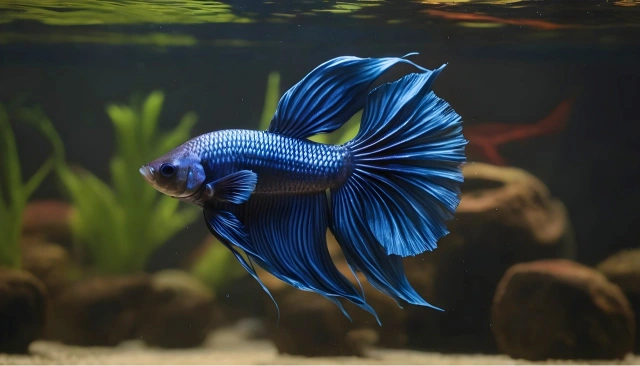Table of Contents
TogglePuppy training treats are more than simply tasty treats; they are strong instruments for shaping your four-legged friend’s behavior and forging an unbreakable link between you two. In this article, I will dive into the fascinating realm of puppy training treats and learn how these tiny treats hold the key to unleashing your pup’s full potential.
Top 4 Puppy Training Treats Options
| Zuke’s Mini Naturals | These soft snacks are high in protein and available in a variety of flavors, making them a fantastic training option. |
| Blue Buffalo Blue Bits | These tasty, bite-sized treats are made with real meat and are free from artificial colors, flavors, and preservatives. |
| Wellness WellBites | These little, squishy snacks come in a variety of flavors and are ideal for training sessions. |
| Merrick Power Bites | These soft snacks are high in protein and available in a variety of flavours, making them a fantastic training option. |
The Role of Puppy Training Treats
Training treats are little, sweet prizes used during training sessions to promote positive behaviors in pups. They are excellent motivators and assist pups in understanding that they are doing something well. As a vet here I explain some of the main reasons why training treats are so important in puppy training.
Motivation
Puppy Training treats play a vital role in motivating our furry friends during the training process. They serve as powerful tools to reinforce positive behavior and can be used to reward and encourage puppies during their learning journey. By providing tasty morsels as a reward, we tap into their instincts, reinforcing the desired actions and making them eager to continue training.
It is important not to rely solely on treats for motivation. While they are effective in the initial stages of training, gradually reducing the frequency of treatment rewards is essential for long-term success. This helps shift the focus towards intrinsic motivation rather than relying solely on external rewards.
By incorporating other forms of positive reinforcement, such as praise or play sessions, into our training routine, I can ensure that our puppies become well-rounded learners who are motivated by more than just food rewards.
Incorporating variety into training treats can also enhance motivation levels for our canine companions. The study has suggested that utilizing different types of treats with varying smells, textures, or flavors keeps things exciting and prevents monotony from setting in.
Just like humans get bored with repetitive tasks, dogs can lose interest if they’re constantly rewarded with the same treat every time. Mixing up the rewards will keep them engaged and enthusiastic about their training sessions.
Positive Reinforcement
Positive reinforcement is highly effective in puppy training treats because it encourages dogs to repeat behaviors that result in pleasant outcomes. Training treats provide instant gratification that can be crucial during the initial stages of learning. It is important to choose the right type of treat, one that is both highly enticing for your pup but also nutritious and balanced.
When it comes to effective training sessions, investing in high-quality puppy training treats may make all the difference. According to research, through positive reinforcement and carefully chosen training treats, you can establish a strong bond with your puppy while promoting good behavior.
Remember that consistency is key, always reward desired actions promptly and avoid using excessive amounts of treats, gradually transitioning to verbal praise and affection instead.
With patience, dedication, and the power of positive reinforcement through these delicious rewards, you will be well on your way to raising a happy and well-trained companion.
Focus and Engagement
Puppy training treats play a crucial role in enhancing focus and engagement during puppy training sessions. These delectable rewards not only serve as instant gratification for the pup but also help create positive associations with the desired behavior.
It is vital to gradually reduce dependence on treats as puppies grow older and more accustomed to commands. By varying the type and timing of treat rewards, you can keep dogs excited and engaged throughout the training process.
Bonding
Puppy training treats play a crucial role in not only teaching your furry friend essential commands but also in building a strong bond between the two of you.
The act of offering treats during training sessions establishes trust and creates a positive association in your puppy’s mind. By rewarding them for their efforts, you are showing them that they have done something right and that they can rely on you for their needs.
Puppy Training treats offer an opportunity for shared experiences and quality time together. When your puppy receives a treat from your hand, it strengthens the emotional connection between you both.
This shared enjoyment further reinforces the bond as it helps break down any barriers or reservations your puppy may have initially had towards you. In this way, training treats become more than just rewards; they become vehicles for developing a deep sense of understanding and affection between owner and pet.
Choosing the Right Puppy Training Treats
When selecting training treats for your puppy, consider the following factors:
Size
When it comes to choosing the right puppy training treats, size plays a crucial role. A common mistake many pet parents make is using large-sized treats for their little furry friends. While it may seem tempting to give them a bigger reward, larger treats can be difficult for puppies to manage and may even pose a choking hazard.
Opting for smaller-sized treats ensures that your pup can easily consume them during training sessions without any risk. Choosing smaller training treats allows you to provide more frequent rewards during training sessions. Puppies have short attention spans, so you want to keep their motivation levels high throughout the process.
By using smaller treats, you can quickly deliver reinforcement and keep their focus on the task at hand. This way, they will be more likely to associate the treatment with the desired behavior and learn faster.
Flavor
When it comes to choosing the right flavor of puppy training treats, it’s important to consider your furry friend’s preferences and health needs. Dogs have different taste preferences, just like humans do, so finding a flavor that your puppy loves will make training sessions more enjoyable for both of you.
Study has suggested Trying out different flavors, such as chicken, beef, peanut butter, or even sweet potato, to see which one gets your pup’s tail wagging with excitement.
While taste is important, it’s crucial also to pay attention to the ingredients in the training treats.
Look for natural and high-quality ingredients without any artificial preservatives or additives. Opting for treats made with real meat or wholesome fruits and vegetables can help ensure that your pup is getting nutritious rewards during their training sessions.
Nutritional Value
When it comes to choosing the right puppy training treats, nutritional value should be at the top of your priority list. While many treats on the market may taste good and grab your pup’s attention, they might not offer much in terms of nutritional content.
It is important to remember that puppies have specific dietary needs during their early development stages, and giving them high-quality treats can greatly impact their growth and overall health. Look for training treats that are made with real meat as the main ingredient.
The study has shown that avoid products that contain fillers or artificial additives, as these can be harmful to your pup’s delicate digestive system. Additionally, opt for treats that are low in fat to prevent excessive weight gain and promote a balanced diet. Garlic and onion should also be avoided since they can be toxic for dogs in large amounts.
Allergies and Dietary Restrictions
When it comes to choosing puppy training treats, allergies and dietary restrictions must be taken into consideration. Dogs, like people, can develop food allergies or sensitivities, which can cause pain and even health problems. It’s essential to find treats that not only help with training but also meet the specific dietary needs of your pup.
One approach is to opt for hypoallergenic treats made from limited ingredients that are less likely to trigger allergic reactions. Look for treats that are free from common allergens, such as grains, dairy, and soy. Instead, choose options like single protein sources such as chicken or salmon.
If your puppy has a specific dietary restriction due to health issues or medical conditions, seek out specialized training treats designed specifically for their needs. For example, if your puppy is on a prescription diet for kidney problems, there are diabetic-friendly low-sodium options available in the market. Be sure to read labels thoroughly and avoid any ingredients that may conflict with their restricted diet.
Soft vs. Hard Treats
When it comes to puppy training treats, one key decision to make is whether to go for soft or hard treats. Soft treats, typically made of tender meat or cheese, have their benefits. Their chewy texture and enticing aroma can make them irresistible to puppies and help maintain their focus during training sessions.
Additionally, because they are easily broken into smaller pieces, they are ideal for portion control and can be used in high-frequency reward-based training. On the other hand, hard treats offer unique advantages that shouldn’t be overlooked. While they may not possess the same level of immediate appeal as soft treats, their sturdiness can be advantageous in certain situations.
For instance, if you are working on commands that require your puppy’s teeth or jaw strength (like fetch or tug), hard treats provide an opportunity for them to exercise those muscles while still being rewarded.
Conclusion
In conclusion, puppy training treats are a valuable tool in the process of training and socializing young dogs. These treats serve as incentives and rewards, motivating puppies to learn new commands and behaviors. By using high-quality, healthy treats, pet owners can ensure that they are providing their puppies with proper nutrition while also reinforcing positive behavior.
It is important to choose treats that are small in size and low in calories to avoid overfeeding or weight gain. With consistent training and the use of tasty treats, pet owners can effectively teach their puppies good manners and obedience.
FAQs
1. What are puppy training treats?
Puppy training treats are small, bite-sized snacks that are specifically designed to reward and motivate puppies during training sessions.
2. Why should I use puppy training treats?
Using treats during training helps reinforce positive behaviors in puppies by providing them with an immediate reward for their good behavior.
3. Are all puppy treats suitable for training?
Not all puppy treats are created equal when it comes to training. Look for treats that are soft, small in size, and highly palatable to keep your puppy engaged and focused during training sessions.
4. How often should I give my puppy training treats?
The frequency of treatment rewards will depend on the individual puppy and the complexity of the training exercise. Generally, it’s recommended to give a treat every time your puppy successfully performs the desired behavior.
5. Can I use regular dog food as puppy training treats?
While you can use regular dog food as a training treat if your puppy finds it rewarding enough, using specially formulated training treats can be more effective as they tend to be more enticing and easier to handle during training sessions.
6. How many calories should be in each puppy training treat?
Training treats should typically have fewer calories compared to regular dog treats or meals since they are given in larger quantities during training sessions. Aim for low-calorie options without sacrificing taste or quality.

Dr. Usman Bajwa, a dedicated veterinarian with a passion for pets, brings years of expertise to the world of pet grooming. Through his blog, he shares valuable insights and practical tips to help pet owners provide the best care for their furry companions. With a focus on promoting the health and happiness of pets, Dr. Usman articles offer easy-to-follow guidance on grooming techniques. When he’s not writing, you can find him at his clinic or enjoying time with his own beloved pets.




